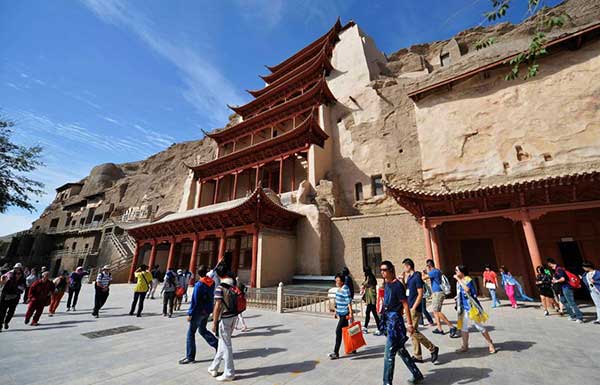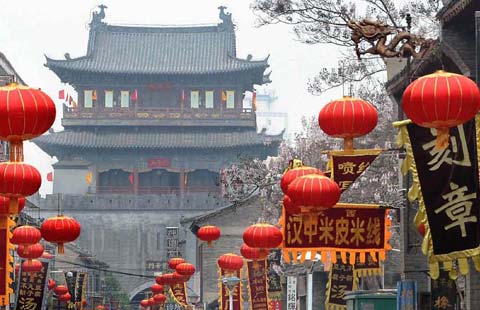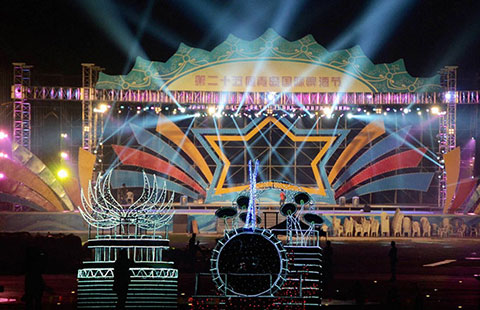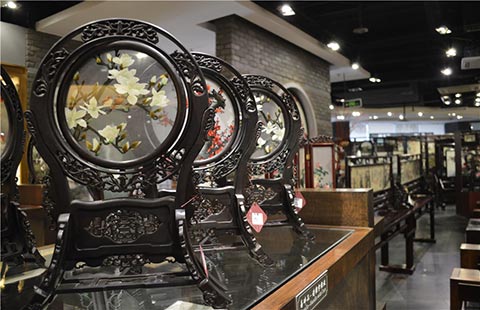Western Chinese province revisits Silk Road past for growth
Updated: 2015-08-06 10:00
(Xinhua)
|
||||||||
 |
|
Mogao Buddha grottoes in China's Gansu province.[Photo/Xinhua] |
China's Belt and Road Initiative has set one of the country's western provinces up for tourism-led growth.
Northwestern China's Gansu province, known for its Mogao Buddha grottoes and Silk Road relics, is seeing more growth from tourism than traditional heavy industries.
The province, once considered a strategic corridor connecting ancient Chinese dynasties with Europe and the Middle East along the Silk Road routes, saw its economic growth outperform the country's average of 7.4 percent last year, thanks to tourism-related services that overtook manufacturing as the biggest pillar of the local economy.
"Tourism is becoming a new driver for the economy in a change of gears," said Wang Fumin, deputy director of the province's tourism bureau. "It creates consumption, spurs investment and could also be billed as a service export."
Both visitor numbers and tourism revenues have seen an average of 30-percent annual growth over the past four years in Gansu. More visitors are expected this year, with growth during the first half already hitting 25 percent.
The boom in tourism is mainly fueled by two things. The first is China's grand Belt and Road Initiative, proposed by Chinese President Xi Jinping to build stronger economic and cultural links with countries situated along the ancient Silk Road via both land and sea, which is raising more awareness among travelers of Gansu's Silk Road legacy.
The rise of mobile Internet has also transformed China's tourism industry. More sophisticated and convenient online services in transportation, ticketing and hotel reservations are picking up the slack for traditional offerings.
Many of the province's major historical relics, such as the Mogao Grottoes, have begun accepting ticket reservations online.
In Zhangye City, a historical town at the heart of the Hexi Corridor, annual visitors have grown 11-fold in the past four years, leading to a boom in hotel construction.
"Four years ago, the government had to sweet talk companies into building hotels. Now money is flowing from everywhere into hotel construction," said Niu Shengle, director of the municipal tourism bureau.
Tourism-related services accounted for half of the city's economic output last year, compared with 33 percent four years ago, and brought in 60 percent of tax revenue.
But the province still has a lot of catching up to do in its tourism services. A woman surnamed Jiang from the eastern Chinese city of Hangzhou, renowned for its UNESCO-recognized West Lake, was not quite pleased with how she was treated during her 10-day trip in the province.
"Some hotels here do not have the quality services indicated by the stars they have, WiFi coverage is poor, waiters are grumpy... These fun-spoilers have to be addressed," Jiang said.

 17 armed forces take part in Russia military contest
17 armed forces take part in Russia military contest
 A glimpse of traditional Chinese business blocks
A glimpse of traditional Chinese business blocks
 Top 5 most popular drones in China
Top 5 most popular drones in China
 Frontier soldiers in exercise against heat wave
Frontier soldiers in exercise against heat wave
 Animals cool off
Animals cool off
 Tsingtao gets ready for huge beer festival in China
Tsingtao gets ready for huge beer festival in China
 Stunning Shu brocade and embroidery techniques
Stunning Shu brocade and embroidery techniques
 Kazan games: Diving in the sky
Kazan games: Diving in the sky
Most Viewed
Editor's Picks

|

|

|

|

|

|
Today's Top News
Malaysia confirms plane debris is from Flight MH370
IMF to study yuan inclusion
LA clinic seeks fertility-market access
China and US discuss ways to fight terror
US VP speaks with Japanese PM after website exposed spying
LA clinic seeks to access Chinese fertility market
Kobe drops retirement hint
Obama issues challenge on climate change
US Weekly

|

|






